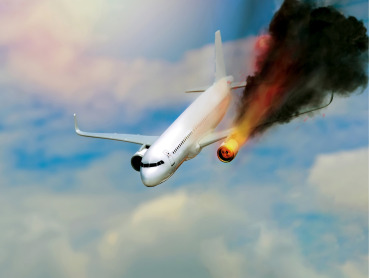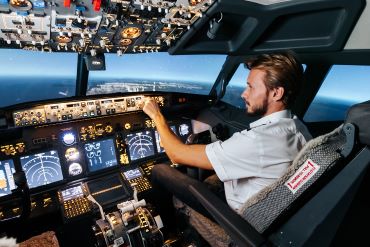
It is common knowledge that of late all air crashes and flight accidents have taken place through the fault of pilots. This does not at all mean that pilots are not skillful enough. On the contrary, bad cases are more common with crews that have an impressive flying time background: these are experienced professionals who have devoted years to the profession, some of them over the course of decades.
So, what is the root of flight accidents and plane crashes? Contradictory though it might seem, but as time goes by, pilots happen to lose alertness and some of their sharp attention, they stop experiencing constant strain since state-of-the-art technology is highly reliable, and all kinds of onboard systems help control an aircraft thus preventing pilots from making mistakes, warning them of danger or faults – in other words, they make the flight as comfortable, smooth and safe as possible. Moreover, air companies - on the regular basis - introduce new rules and recommendations aimed at enhancing flight safety.
Nevertheless, air disasters do happen. After decoding the black boxes that record flight parameters, flight control systems performance and pilots’ voice conversation it turns out, as a rule, that even where a technical problem had its primary causes the pilots not in every instance remedied the consequences in a timely and appropriate manner.
If something goes wrong in any situation any person would get into a state of stress. If this stress is caused by realizing how high the risk to life is indeed it actually prevents from making the right decisions and analyzing the situation with a cool head, as well as reduces concentration. In many cases problems had snowballed in a short span of time and led to irreversible consequences. Planes crashed, and people died.

Not all dangerous situations though led to disasters. Air companies regularly perform flight checks. Black boxes are used on an ongoing basis to reveal pilots’ errors; at a later date they are fined or fired. Perhaps dismissed pilots get jobs with other air companies after a while, and then everything starts all over again.
In our upcoming publications you will learn how, sitting in a passenger seat, to get at least a piece of information about the flight and what exactly might arouse concern, but in the meantime here’s our recommendation to an ordinary passenger: keep your seat belt fastened throughout the flight, note the emergency exits and trust the pilots.
Follow the series of articles:
Flight experience from TFT aero Dubai
Should aerophobes seek medical assistance from a psychist?
Why everyone on board fell asleep and crashed.
